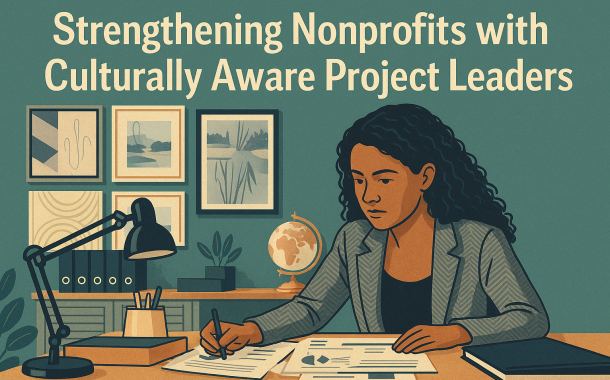Project leaders play a big role in this. They manage goals, timelines, and outcomes—but they also shape how the work gets done. When they bring cultural understanding into their approach, they create plans that are more responsive and realistic. This is especially important in nonprofits that serve Indigenous, immigrant, or underserved communities.
Table of Contents
Moving Beyond One-Size-Fits-All Leadership
Many nonprofit projects fail because they rely on templates that don’t match the real needs of the people involved. Standard models for timelines, budgeting, or evaluation often ignore cultural context. What works in one setting may not work in another.
Culturally aware leaders understand that communities aren’t all the same. They don’t force a method just because it’s popular. Instead, they ask questions, adjust timelines, and adapt tools to match the setting. This approach leads to better results, fewer delays, and stronger community partnerships.
Leadership that fits the local context is not just nice to have—it’s essential, especially in communities that have been underserved or misrepresented for decades.
One program that helps develop this kind of leader is the online project management master’s degree program in Native American Leadership offered through Southeastern Oklahoma State University. This program combines flexible, accelerated online learning with a strong focus on Indigenous community needs.
Students in this program learn more than just timelines and budgets. They also gain insight into tribal governance, advocacy, and community-centered development. The format allows working professionals—whether they live in tribal regions or urban settings—to earn their degree while staying rooted in their communities.
How Culture Impacts Community Engagement
Community engagement isn’t just about showing up. It’s about how you show up. Leaders who know the values, history, and language of a group are better at earning trust. They know how to hold meetings, speak to elders, and listen without pushing.
Without that awareness, engagement efforts can fall flat. People may feel talked down to or ignored. They may see the nonprofit as an outsider, even if its mission is good.
Culturally aware leaders help avoid these problems. They take the time to learn, ask, and respect traditions. As a result, communities are more likely to get involved, offer feedback, and take part in the work.
Project Planning with Cultural Context
Planning is a big part of any project. But when you don’t understand the community, plans can miss the mark. You might set goals that aren’t realistic. You might create steps that don’t fit the local pace or traditions. Or you might forget to include essential voices in the process.
Leaders with cultural awareness plan differently. They know when to slow down, when to ask for input, and when to change course. They look at holidays, local events, and even weather patterns that might affect participation.
This type of planning builds stronger, more respectful relationships. It also makes projects more likely to succeed, because they’re built on real knowledge, not guesses.
Building Trust Through Authentic Communication
Trust is the foundation of every nonprofit’s work. If the community doesn’t trust you, it won’t matter how well you design your project. People won’t show up. They won’t share their needs. They won’t give you honest feedback.
Culturally aware leaders understand this. They don’t use generic language. They speak clearly, avoid jargon, and listen more than they talk. They learn the preferred ways of communication in the community—whether that means face-to-face meetings, storytelling, or group decision-making.
This approach shows respect. It proves that the leader is not just there to manage but to learn and work with the people. That’s how trust grows—and that’s how lasting impact begins.
Reducing Harm Through Inclusive Risk Management
Every project comes with risk. But when cultural context is ignored, those risks grow. A poorly timed event or a tone-deaf message can damage years of trust in one day. That’s why culturally aware leaders think about risk differently.
They consider the values and customs of the community before making decisions. They ask questions about how a plan might be received. They plan for different outcomes, not just from a funding view, but from a community response view.
This kind of inclusive risk management helps avoid harm. It also helps leaders correct mistakes faster if something goes wrong. When you include the community in the planning process, you spot risks early and avoid costly missteps.
Strong leadership is more than good project plans and performance metrics. It’s about knowing the people, respecting their culture, and being ready to learn. Culturally aware project leaders bring all of this to the table.
For nonprofits that want to grow, connect, and truly serve, these are the kinds of leaders worth investing in.



